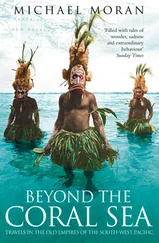The Indians enter the Cueva del Guacharo once a year, near midsummer. They go armed with poles, with which they destroy the greater part of the nests. At that season several thousand birds are killed; and the old ones, as if to defend their brood, hover over the heads of the Indians, uttering terrible cries. The young,* (* Called Los pollos del Guacharo.) which fall to the ground, are opened on the spot. Their peritoneum is found extremely loaded with fat, and a layer of fat reaches from the abdomen to the anus, forming a kind of cushion between the legs of the bird. This quantity of fat in frugivorous animals, not exposed to the light, and exerting very little muscular motion, reminds us of what has been observed in the fattening of geese and oxen. It is well known how greatly darkness and repose favour this process. The nocturnal birds of Europe are lean, because, instead of feeding on fruits, like the guacharo, they live on the scanty produce of their prey. At the period commonly called, at Caripe, the oil harvest,* (* La cosecha de la manteca.) the Indians build huts with palm-leaves, near the entrance, and even in the porch of the cavern. There, with a fire of brushwood, they melt in pots of clay the fat of the young birds just killed. This fat is known by the name of butter or oil (manteca, or aceite) of the guacharo. It is half liquid, transparent, without smell, and so pure that it may be kept above a year without becoming rancid. At the convent of Caripe no other oil is used in the kitchen of the monks but that of the cavern; and we never observed that it gave the aliments a disagreeable taste or smell.
The race of the guacharos would have been long ago extinct, had not several circumstances contributed to its preservation. The natives, restrained by their superstitious ideas, seldom have courage to penetrate far into the grotto. It appears also, that birds of the same species dwell in neighbouring caverns, which are too narrow to be accessible to man. Perhaps the great cavern is repeopled by colonies which forsake the small grottoes; for the missionaries assured us that hitherto no sensible diminution of the birds has been observed. Young guacharos have been sent to the port of Cumana, and have lived there several days without taking any nourishment, the seeds offered to them not suiting their taste. When the crops and gizzards of the young birds are opened in the cavern, they are found to contain all sorts of hard and dry fruits, which furnish, under the singular name of guacharo seed (semilla del guacharo), a very celebrated remedy against intermittent fevers. The old birds carry these seeds to their young. They are carefully collected, and sent to the sick at Cariaco, and other places of the low regions, where fevers are generally prevalent.
As we continued to advance into the cavern, we followed the banks of the small river which issues from it, and is from twenty-eight to thirty feet wide. We walked on the banks, as far as the hills formed of calcareous incrustations permitted us. Where the torrent winds among very high masses of stalactites, we were often obliged to descend into its bed, which is only two feet deep. We learned with surprise, that this subterranean rivulet is the origin of the river Caripe, which, at the distance of a few leagues, where it joins the small river of Santa Maria, is navigable for canoes. It flows into the river Areo under the name of Cano do Terezen. We found on the banks of the subterranean rivulet a great quantity of palm-tree wood, the remains of trunks, on which the Indians climb to reach the nests hanging from the roofs of the cavern. The rings, formed by the vestiges of the old footstalks of the leaves, furnish as it were the steps of a ladder perpendicularly placed.
The Grotto of Caripe preserves the same direction, the same breadth, and its primitive height of sixty or seventy feet, to the distance of 472 metres, or 1458 feet, accurately measured. We had great difficulty in persuading the Indians to pass beyond the anterior portion of the grotto, the only part which they annually visit to collect the fat. The whole authority of 'los padres' was necessary to induce them to advance as far as the spot where the soil rises abruptly at an inclination of sixty degrees, and where the torrent forms a small subterranean cascade.* (* We find the phenomenon of a subterranean cascade, but on a much larger scale, in England, at Yordas Cave, near Kingsdale in Yorkshire.) The natives connect mystic ideas with this cave, inhabited by nocturnal birds; they believe that the souls of their ancestors sojourn in the deep recesses of the cavern. "Man," say they, "should avoid places which are enlightened neither by the sun (zis), nor by the moon (nuna)." 'To go and join the guacharos,' is with them a phrase signifying to rejoin their fathers, to die. The magicians (piaches) and the poisoners (imorons) perform their nocturnal tricks at the entrance of the cavern, to conjure the chief of the evil spirits (ivorokiamo). Thus in every region of the earth a resemblance may be traced in the early fictions of nations, those especially which relate to two principles governing the world, the abode of souls after death, the happiness of the virtuous and the punishment of the guilty. The most different and most barbarous languages present a certain number of images, which are the same, because they have their source in the nature of our intelligence and our sensations. Darkness is everywhere connected with the idea of death. The Grotto of Caripe is the Tartarus of the Greeks; and the guacharos, which hover over the rivulet, uttering plaintive cries, remind us of the Stygian birds.
At the point where the river forms the subterranean cascade, a hill covered with vegetation, which is opposite to the opening of the grotto, presents a very picturesque aspect. It is seen at the extremity of a straight passage, 240 toises in length. The stalactites descending from the roof, and resembling columns suspended in the air, are relieved on a back-ground of verdure. The opening of the cavern appeared singularly contracted, when we saw it about the middle of the day, illumined by the vivid light reflected at once from the sky, the plants, and the rocks. The distant light of day formed a strange contrast with the darkness which surrounded us in the vast cavern. We discharged our guns at a venture, wherever the cries of the nocturnal birds and the flapping of their wings, led us to suspect that a great number of nests were crowded together. After several fruitless attempts M. Bonpland succeeded in killing a couple of guacharos, which, dazzled by the light of the torches, seemed to pursue us. This circumstance afforded me the means of making a drawing of this bird, which had previously been unknown to naturalists. We climbed, not without difficulty, the small hill whence the subterranean rivulet descends. We saw that the grotto was perceptibly contracted, retaining only forty feet in height, and that it continued stretching to north-east, without deviating from its primitive direction, which is parallel to that of the great valley of Caripe.
In this part of the cavern, the rivulet deposits a blackish mould, very like the matter which, in the grotto of Muggendorf, in Franconia, is called "the earth of sacrifice."* (* Opfer-erde of the cavern of Hohle Berg (or Hole Mountain—a mountain pierced entirely through.)) We could not discover whether this fine and spongy mould falls through the cracks which communicate with the surface of the ground above, or is washed down by the rain-water penetrating into the cavern. It was a mixture of silex, alumina, and vegetable detritus. We walked in thick mud to a spot where we beheld with astonishment the progress of subterranean vegetation. The seeds which the birds carry into the grotto to feed their young, spring up wherever they fix in the mould which covers the calcareous incrustations. Blanched stalks, with some half-formed leaves, had risen to the height of two feet. It was impossible to ascertain the species of these plants, their form, colour, and aspect having been changed by the absence of light. These traces of organization amidst darkness forcibly excited the curiosity of the natives, who examined them with silent meditation inspired by a place they seemed to dread. They evidently regarded these subterranean plants, pale and deformed, as phantoms banished from the face of the earth. To me the scene recalled one of the happiest periods of my early youth, a long abode in the mines of Freyberg, where I made experiments on the effects of blanching (etiolement), which are very different, according as the air is pure or overcharged with hydrogen or azote.
Читать дальше












